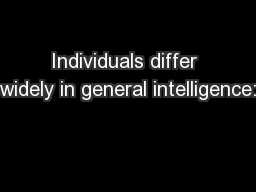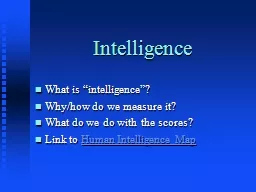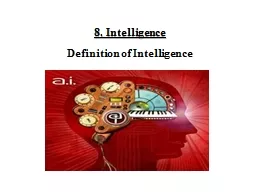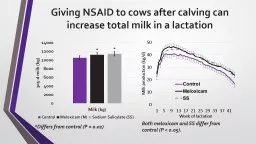PPT-Individuals differ widely in general intelligence:
Author : liane-varnes | Published Date : 2017-09-15
The causeor consequenceof socioeconomic inequality Linda S Gottfredson PhD School of Education University of Delaware Newark DE 19716 USA Human Capital in LatinAmerican
Presentation Embed Code
Download Presentation
Download Presentation The PPT/PDF document "Individuals differ widely in general int..." is the property of its rightful owner. Permission is granted to download and print the materials on this website for personal, non-commercial use only, and to display it on your personal computer provided you do not modify the materials and that you retain all copyright notices contained in the materials. By downloading content from our website, you accept the terms of this agreement.
Individuals differ widely in general intelligence:: Transcript
Download Rules Of Document
"Individuals differ widely in general intelligence:"The content belongs to its owner. You may download and print it for personal use, without modification, and keep all copyright notices. By downloading, you agree to these terms.
Related Documents














